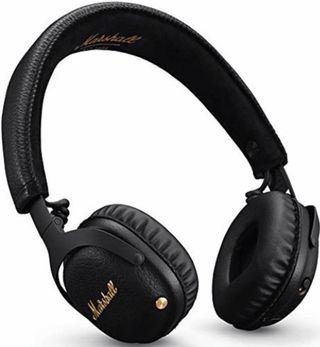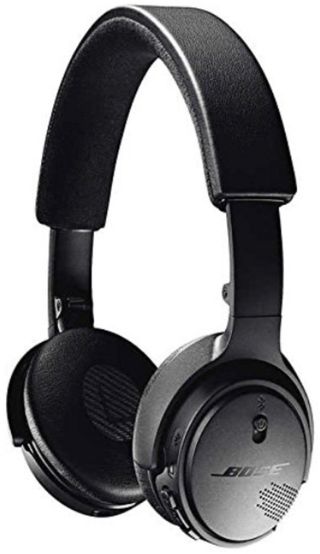
Best answer: Generally, no. For most people, on-ear headphones are as comfortable or more comfortable than over-ear headphones.
- Active noise cancellation: Marshall MID ANC On-Ear Headphones ($188 at Amazon)
- No strings attached: Bose SoundLink Bluetooth On-Ear Headphones ($179 at Amazon)
Over-ear vs. On-Ear vs. In-Ear
Over-ear headphones generally rest around your ears and seal to your head. On-ear headphones, however, rest directly on your ears. The best choice really boils down to personal preference. On-ear models' edge over over-ear, for example, is that it reduces the likelihood of your ears getting hot due to a complete seal around your ears. On-ear will also attempt to mimic the immersion that over-ear headphones have, so you theoretically won't be missing out on key features.
In-ear headphones (usually earbuds or IEMs), on the other hand, are a completely different class of headphone. In-ears often try to mimic over-ear headphones but instead of covering your entire ear, it goes in your ear canal (hence in-ear). This isn't always the case — Apple's AirPods are considered in-ear earbuds yet rest on your ear instead of in your ear. They also don't feature any sort of noise isolation.
How do I know if on-ear headphones will be comfortable for me?
For on-ear or over-ear headphones, you should check what material the pads are made out of. This will affect how the headphone feels on your ears but also the clamping force (how much pressure is applied).
Some headphones may feel really nice on your ears but may have a strong clamping force. This can cause some comfort issues after a longer period of time. On the other hand, they may not feel that great on your ears but are more comfortable over long periods of time.
Be an expert in 5 minutes
Get the latest news from Android Central, your trusted companion in the world of Android

However, most headphones (whether on-ear or over-ear) have user-replaceable earpads just in case you don't like the native material. Materials such as memory foam, leather, or lambskin are examples of comfortable materials.
The second major issue when it comes to comfort is the headband and how it sits on the top of your head. I know this is an issue for me personally (mostly because I have a big head). Whether it's on-ear or over-ear, the headphones will need to rest on the top of your head. If they don't have a proper or soft cushion, the crown of your head can become uncomfortable very quickly.
Why should I avoid on-ear headphones?
On-ear headphones are typically the worst of both worlds. They don't fully immerse you in your music or block out noise as well also over-ear headphones do and they aren't as portable as most in-ear headphones.
However, if over-ears are too big and bulky and you want to block out noise as much as possible, on-ear headphones may be the next best thing. As with any headphones, you should read or watch reviews online or try them out at your local electronics store, if possible.
Making the case for on-ear headphones
Not all on-ear headphones are bad, however. If you prefer them, the Marshall MID ANC are a great all around pair. They offer a wireless connection over Bluetooth, active noise cancellation, and a solid 17 hours of battery life.
Another choice would be going with the Beats Solo 3 Wireless. While they aren't the greatest sounding with an overall darker sound signature, they're unstoppable with a ridiculous 42 hours of battery life.
Either way, you can't go wrong.

ANC, Bluetooth, and 17 hours of battery life
The Marshall MID ANC offer exceptional sound quality with a slightly enhanced treble region, giving it an overall more sharp sound. Free yourself from wires with its Bluetooth connection and 17 hours of all-day battery life.

Wireless on-ear headphones with 15 hours of battery life
These on-ear headphones are comfortable due to their lack of seal. They also offer great all-day battery-life with exceptional sound.

